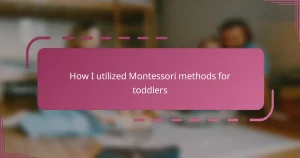Key takeaways
- Kids yoga emphasizes fun, imagination, and mindfulness, helping children develop self-regulation and emotional awareness.
- Short sessions tailored to children’s energy levels and interests foster engagement and strengthen the parent-child bond.
- Incorporating storytelling and playful elements into yoga routines keeps children curious and eager to participate.
- Establishing a consistent, relaxed home practice enhances children’s enthusiasm and trust in the activity.
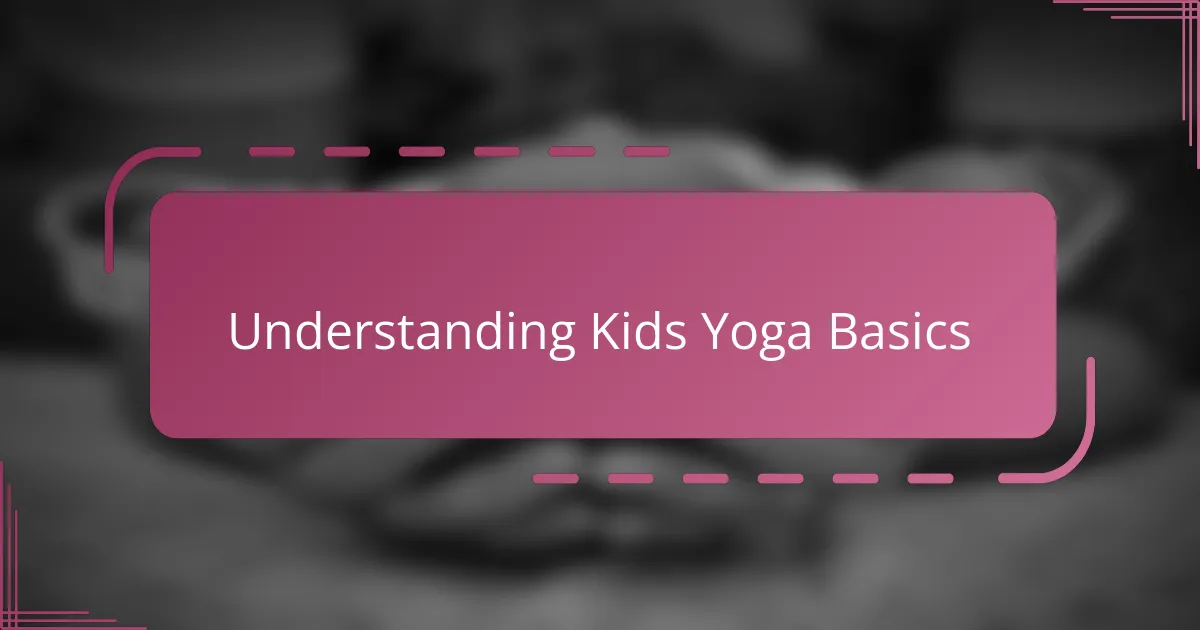
Understanding Kids Yoga Basics
When I first introduced yoga to my kids, I realized that understanding the basics was more about embracing simplicity than mastering poses. Kids yoga isn’t about perfect form; it’s about fun, imagination, and movement. Have you ever noticed how children naturally stretch and twist while playing? That’s the essence of kids yoga—encouraging natural body awareness in a playful way.
What struck me most was how the basics focus on breathing and mindfulness, even for little ones. Teaching my children to take deep breaths and pay attention to their bodies became a calming ritual, especially on stressful days. It made me wonder, could such simple practices help our kids navigate their emotions better?
Also, the foundation of kids yoga includes short sessions with clear guidance, which keeps their attention without overwhelming them. I found that this gentle structure helped my kids feel successful and eager to participate again. Isn’t it amazing how something so straightforward can foster both physical and emotional growth at the same time?
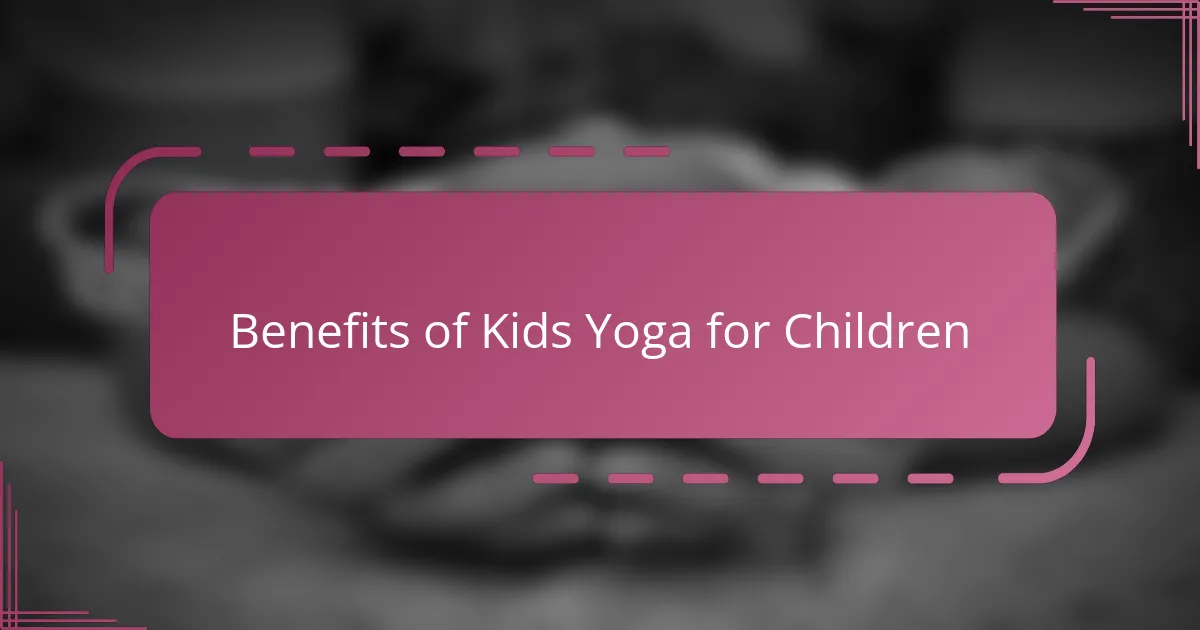
Benefits of Kids Yoga for Children
What I’ve noticed firsthand is how kids yoga boosts children’s confidence. When my kids master a new pose, even a simple one, their faces light up with pride. Isn’t it wonderful how these small achievements can nurture a sense of accomplishment early on?
Another benefit that’s become clear to me is the way yoga helps children develop better focus and patience. During practice, I see my kids learning to stay still and listen to their bodies, which surprisingly carries over to quieter moments in their day. Have you ever seen a restless child suddenly calm down after some mindful breathing? It’s truly remarkable.
Physically, kids yoga encourages strength, flexibility, and balance without the intensity of competitive sports. I recall my daughter happily stretching and twisting, building her coordination gently. It made me realize that yoga provides a safe, low-pressure environment for children to explore movement in their own pace. Don’t you think that kind of gentle activity is just what growing bodies need?
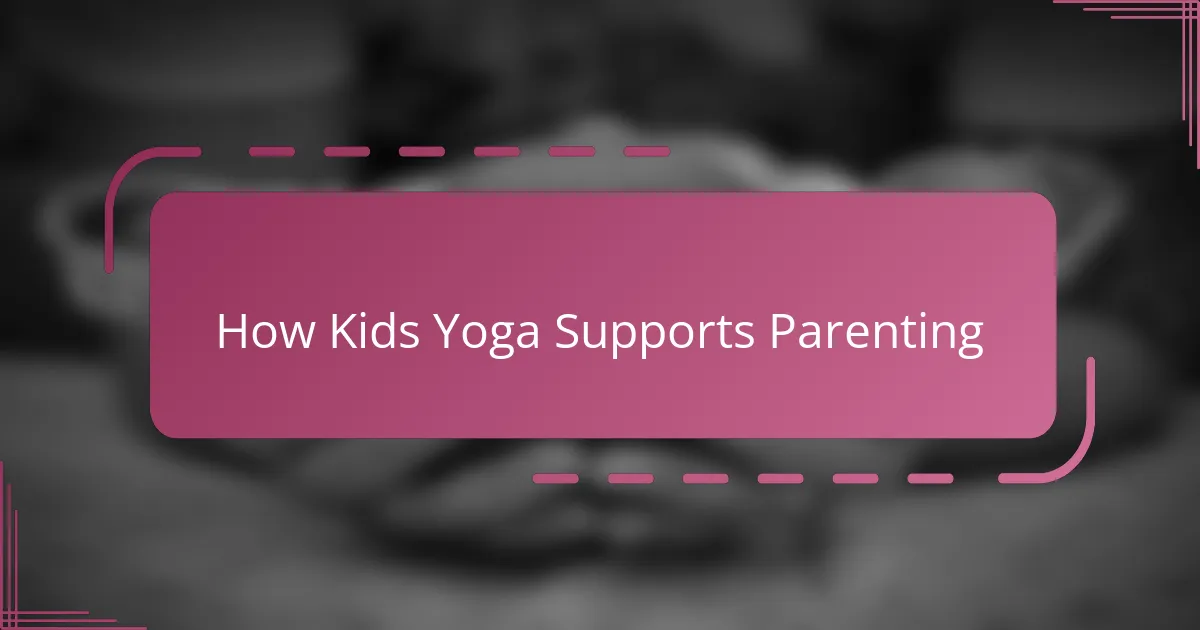
How Kids Yoga Supports Parenting
One thing I truly appreciate about kids yoga is how it offers parents a shared activity that strengthens our bond with our children. Sitting down together on the mat, guiding them through poses or breathing exercises, creates moments of connection that feel both calming and joyful. Have you ever noticed how these shared experiences can turn a hectic day into something tender and meaningful?
Another aspect I find invaluable is how kids yoga supports my role as a parent by promoting my children’s self-regulation. When they learn to recognize and manage their emotions through mindful breathing or gentle stretching, it eases some of the daily tantrums and meltdowns. Isn’t it a relief when a simple yoga breath can help soothe a frustrated child?
Finally, kids yoga helps me model patience and presence, qualities I want to pass on. When I demonstrate a pose slowly or breathe deeply alongside my kids, I’m teaching them more than just yoga—I’m showing them how to be calm and attentive in life. Have you found that your own stress melts away just by joining your child on the mat? For me, it’s one of the sweetest parenting wins.
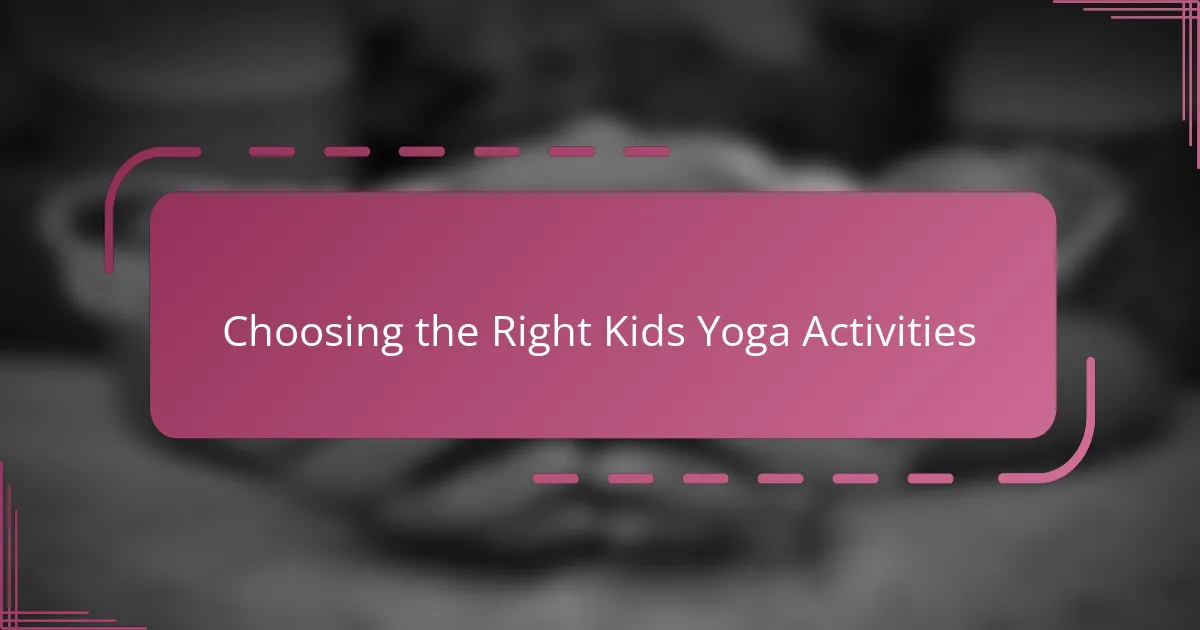
Choosing the Right Kids Yoga Activities
Finding the right kids yoga activities felt like a journey for me. I quickly learned that choosing poses or games that match my children’s energy levels and interests made all the difference. Have you ever tried a yoga session where your child’s eyes start to wander? That’s often a sign to switch things up to something more engaging or playful.
I also pay close attention to the balance between movement and stillness. Some days, my kids are full of energy and crave more active stretches or animal-inspired poses, while other times, they need slower, calming exercises like deep breathing or gentle twists. Isn’t it fascinating how tuning in to their mood helps yoga feel more like an invitation than a chore?
Lastly, I’ve found that incorporating storytelling into yoga routines works wonders. My kids love when I create a little adventure around the poses, like pretending to be trees or warriors. This imaginative approach turns the practice into a fun game that keeps them curious and eager. Have you tried turning yoga into a story yet? It’s a game-changer in my experience.
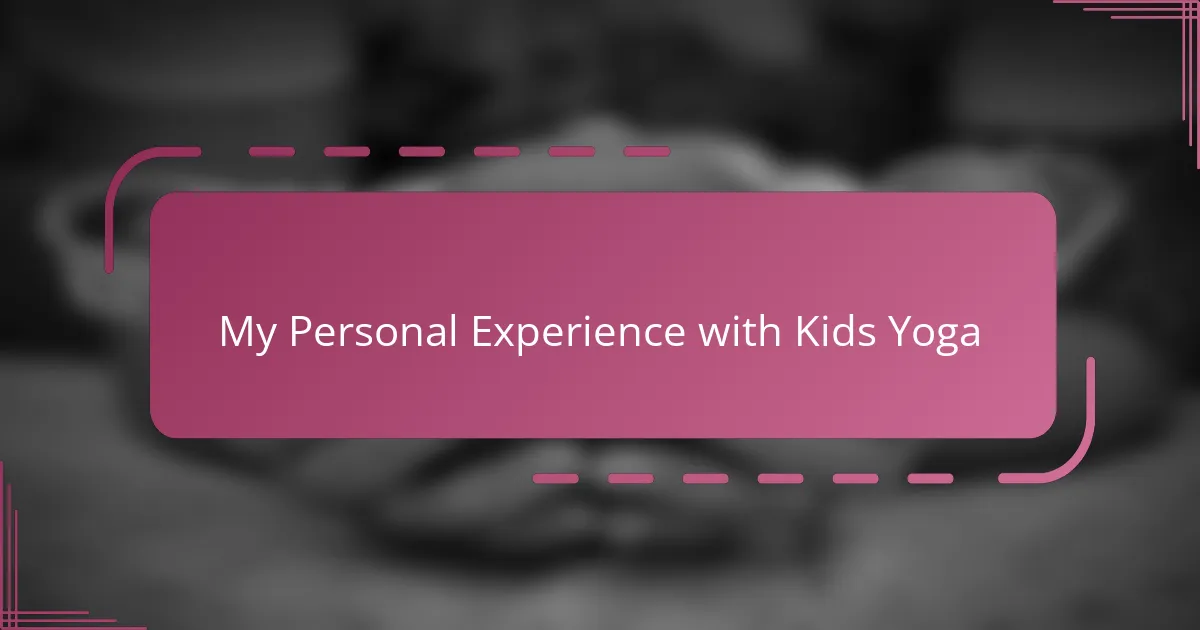
My Personal Experience with Kids Yoga
When I first practiced kids yoga with my own children, I was amazed at how quickly they embraced the sessions with genuine enthusiasm. Watching my son proudly hold a pose he thought was tricky made me realize how empowering these small milestones can be for their confidence. Have you ever seen a child beam simply because they accomplished something they didn’t expect to?
One moment that stands out in my experience was during a particularly chaotic afternoon when my daughter was overwhelmed and restless. Introducing a few calming breaths and gentle stretches turned the mood completely around—I saw her tension dissolve before my eyes. Isn’t it incredible how such simple practices can have an immediate impact on a child’s emotional state?
Over time, I noticed that kids yoga became more than just a physical activity; it became our special time together. The quiet moments of shared focus made me appreciate how this practice nurtures not only their bodies but also our relationship. Have you found that these small rituals build trust and connection in your family as much as they do in mine?
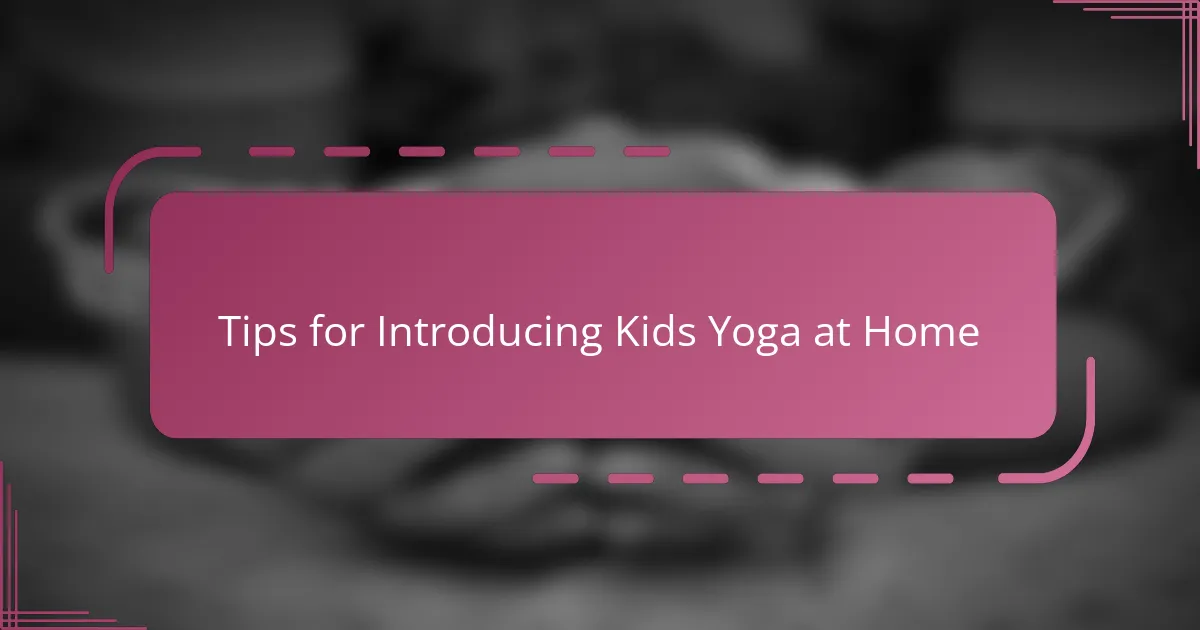
Tips for Introducing Kids Yoga at Home
Starting kids yoga at home became easier for me once I realized how important it is to keep sessions short and playful. My kids’ attention span is limited, so I usually aim for about 10 to 15 minutes, mixing in fun poses and storytelling. Have you ever tried turning a simple pose into a game? That little twist makes all the difference in keeping their interest alive.
Creating a cozy, distraction-free space also helped us immensely. When we clear the living room and lay down soft mats, it feels like entering a special zone just for us. I noticed that having this dedicated spot made my children more eager to join in, almost like they were stepping into a new adventure.
Lastly, I found that celebrating small wins builds enthusiasm. Whether it’s a shaky tree pose or a successful deep breath, praising these moments encourages my kids to keep coming back. Do you also find that positive reinforcement makes yoga feel less like a lesson and more like a shared celebration? For me, that’s the heart of making kids yoga stick at home.
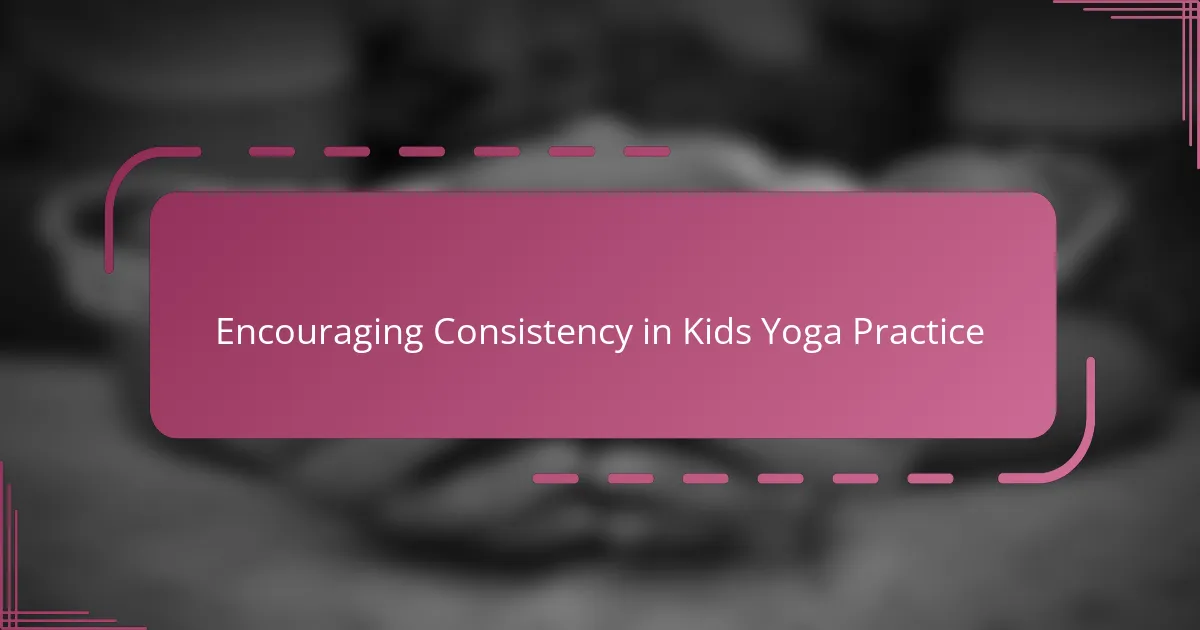
Encouraging Consistency in Kids Yoga Practice
Keeping kids engaged in yoga consistently has been a bit of a balancing act in my experience. What really helped was making yoga a predictable part of our routine—like a little daily ritual that my children came to expect and enjoy. Have you ever noticed how kids thrive on routine? That familiarity creates a comforting space where yoga isn’t just an activity but a natural part of their day.
Another thing I found effective was mixing up the sessions enough to keep them fresh while still sticking to the familiar format. Sometimes we explore new poses or stories, and other times we revisit favorite moves that bring comfort. Does your child respond better to novelty or to repetition? For me, blending both helped maintain their excitement and willingness to return.
Lastly, patience plays a huge role in encouraging consistency. There were days my kids were all in, and others when they just wanted to play or rest. Instead of pushing, I learned to follow their lead and honor their mood, which in turn deepened their trust and made them more eager to come back next time. Isn’t it amazing how respecting their pace makes the practice feel like a choice rather than a chore?


